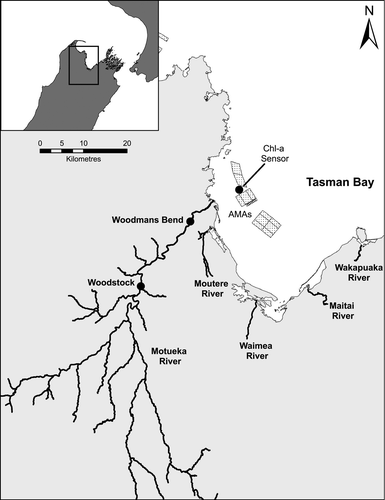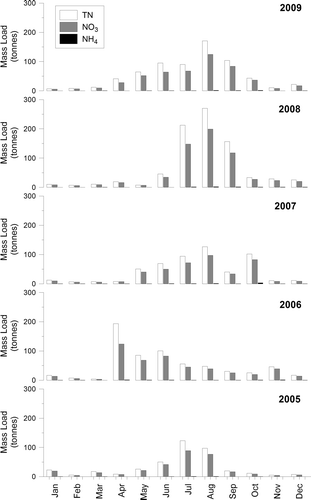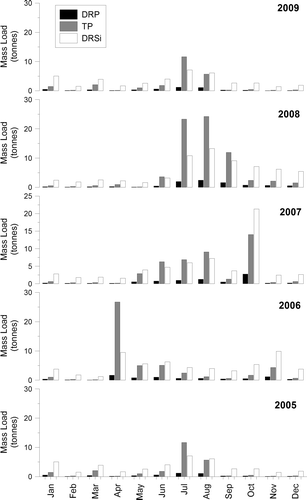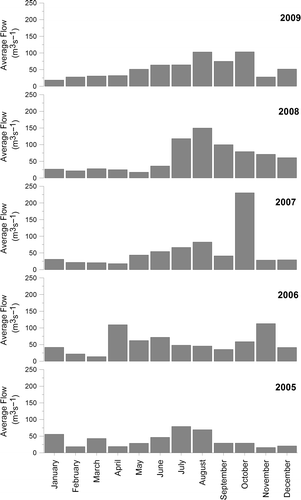Figures & data
Figure 1 Study area showing the Motueka catchment, freshwater data collection points (Woodstock and Woodmans Bend) and Tasman Bay aquaculture management areas (AMAs).

Table 1 Yearly classification of flow states, showing year to year variability.
Table 2 Equation characteristics [concentration = slope×log10(flow) + C] used to calculate average nutrient concentrations for the different seasons and flow states.
Table 3 Mean concentrations (mg/m3) for each nutrient used to calculate river loads where significant relationships were not observed.
Figure 2 Concentration flow relationships for different flow state (steady, rising or falling) and season (summer or winter). The concentration relationships are independent of flow (i.e. flat) where the relationships were not significant or estimated concentrations were greater than observed. The distribution of samples as log10 (% of seasonal samples) over the flow range is shown for the winter and summer periods (bottom right), indicating the majority of samples (c. 70–80%, or c. 240 samples) were undertaken in flows less than 100 m3/s.

Table 4 Annual mass transport of nutrients into Tasman Bay from the Motueka River, 2005–2009.
Figure 4 Estimated average monthly discharge of total nitrogen (TN), nitrate (NO3-N) and ammonium (NH4-N) from the Motueka River into Tasman Bay from 2005 to 2009.

Figure 5 Estimated average monthly discharge of dissolved reactive phosphorus (DRP), total phosphorus (TP) and dissolved reactive silica (DRSi) from the Motueka River into Tasman Bay from 2005 to 2009. DRSi values have been divided by 100.

Figure 6 Chlorophyll a (chl a) concentrations estimated using a fluorometric sensor (Falmouth Scientific Instruments) moored at 4 m water depth, and mussel condition over the same time period in the aquaculture management area (top panel). A higher condition corresponds with a higher% tissue to shell weight. Motueka River flows over the same period (bottom panel).

